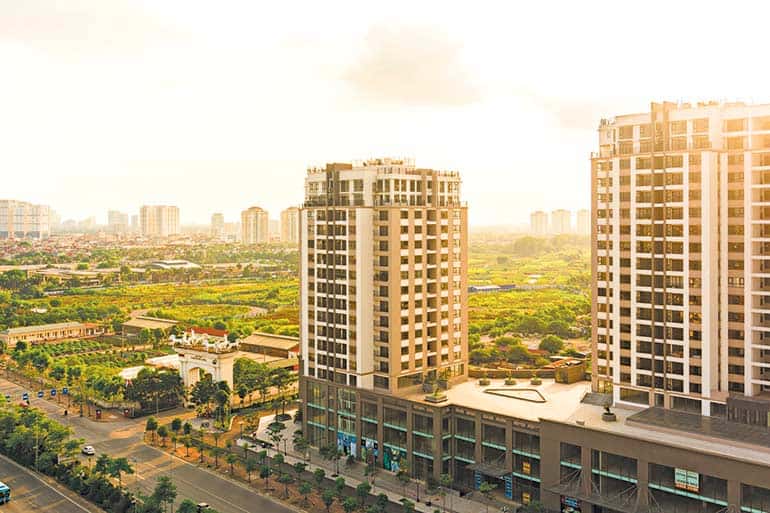
With the arrival of vaccines, the end of the COVID-19 pandemic is on the horizon. And while the impact of the crisis may be felt for years to come, there is some comfort in the fact that life could return to normal soon.
This optimism is particularly evident in the real estate sector, which is among the worst-hit industries by the pandemic due to its effects restricting the construction of new properties as well as leaving many retail and office spaces vacant. According to a report by online property marketplace Lamudi, the industry may see a surge of interest in commercial and residential properties within the country’s central business districts this year as market sentiment improves.
Lamudi expects more growth opportunities for the real estate market as the Philippines maintains its solid economic fundamentals and rolls out mass vaccination against COVID-19. The online platform sees its page views for residential properties spiking in the first half of 2021 amid growing interest in houses, condominiums, and foreclosed properties, with land having the biggest demand growth between the first to the second half of the year, while foreclosed properties seeing an uptick in the first half.
“Condos, meanwhile, are projected to have the highest growth from second half of 2020 to second half of 2021,” Lamudi said.
Furthermore, apartment listings grew between the first and last quarter last year, which Lamudi said could be a response to more property seekers looking for investment opportunities or cheaper housing close to their workplaces.
“As residents in the metro gravitate towards rentals, this type of real estate presents a promising passive income source for investors.”
Indeed, real estate investments will become a crucial force towards directing the pace of economic recovery, according to real estate services firm Cushman & Wakefield. Such investments serve as fuel for various sectors that support the economy and the firm believes that the demand for commercial real estate in the Philippines will once again pick up post-pandemic.
According to Cushman & Wakefield’s May 2021 Philippine Property Market report, the exposure of the real estate sector in the banking industry reached a 3-year high in June 2020 after it has been on the rise since June 2017. The Bangko Sentral ng Pilipinas reported that lending to property developers rose to P2.2 trillion as of end-June 2020, an increase by 11.2% from P1.98 trillion in June 2019.
Broken down, during the same period, this amounted to commercial real estate loans of P1.42 trillion, up by 11.9% from P1.26 trillion in end-June 2019, and residential real estate loans of P787.9 billion, up by 10.3% from P714.06 billion in end-June 2019.

Overall, the consolidated real estate loan exposure of the Philippines’ major banking industry players in end-June 2020 is recorded at 20.73% of the total loan book, an increase from the 20.31% recorded in the previous quarter. Similarly, the gross non-performing real estate loan ratio of the country’s banks also ballooned to 2.77% in end-June 2020 from 1.74% a year ago.
Property consultancy firm Colliers International, in its first quarter property market report, said that the government’s vaccination program and economic recovery plans provide a glimmer of hope in the industry, in spite of the current weak office leasing and residential demand.
“The government’s vaccination program is providing a glimmer of hope, and economic recovery should also provide a much-needed boost to local investor and end-user demand. In our view, developers should further test demand in the luxury market and become more innovative with promotions and incentives,” Colliers said.
Mid-income to luxury projects are expected to drive residential demand over the next 12 to 24 months. Colliers added that they see a recovery in new residential supply in 2021 as developers are already exploring the viability of new project launches in key areas across Metro Manila.
Meanwhile, e-commerce, outsourcing and data centers are expected to continue driving office demand post-COVID, as Colliers saw the highest transaction level in the first quarter since the lockdown began last year. However, net absorption remained negative because of lease cancellations and/or non-renewals. Colliers further said that it sees net take-up recovering by the end of 2021.
Yet, such a recovery depends entirely on the successful rollout of vaccines across the metro.
“In our view, Metro Manila’s office market demand recovery hinges on the pace of the COVID-19 vaccination program. Increasing vaccinations should reduce the number of COVID cases and bolster confidence for companies to return to the office,” Colliers said.
Retail, however, remains uncertain. Physical stores are projected to post higher vacancy numbers as consumers and retailers wait to see what becomes of the crisis. No new retail space was completed in Q1 2021. Colliers said that it expects lockdowns in Metro Manila and subdued consumer confidence to push retail vacancy to 16%, the highest since 2002.
“We expect demand slowdown and closure of physical stores to keep rents on a downward trend before a slow recovery begins by 2023,” Colliers said.
Article and Photo originally posted by Business World last June 7, 2021 9:04am and written by Bjorn Miel M. Beltran.







More Stories
Vista Land Celebrates 50 Years with Sandiwa: An Event Honoring Leadership, Legacy, and the Filipino Dream of Homeownership
Vista Land Celebrates Love Month in Ilocos Region
Vista Land Bridges Cebuano Heritage and Progress with Valencia by Vista Estates